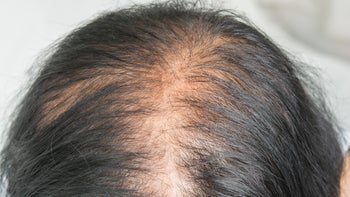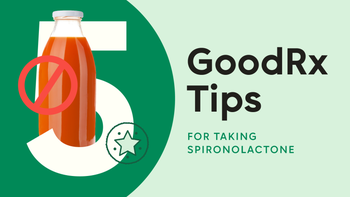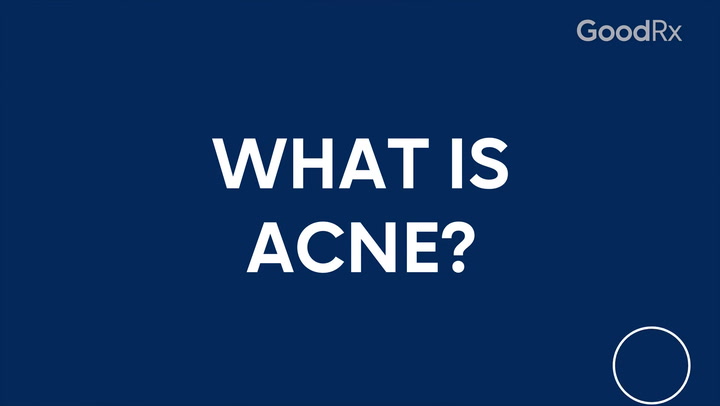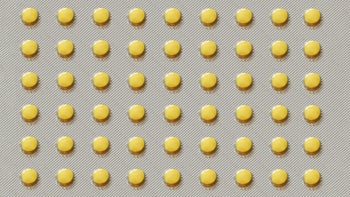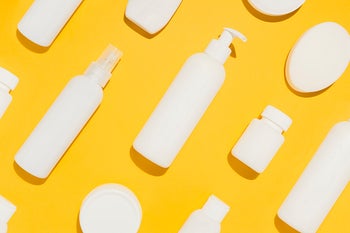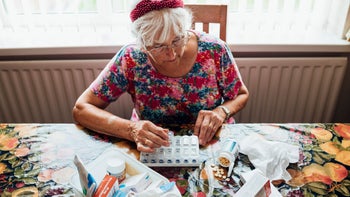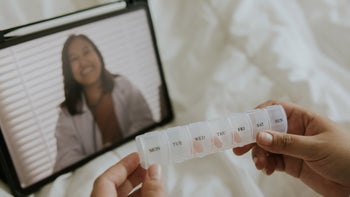
Spironolactone for Acne: Side Effects, Treatment, Dosage, and More
Key takeaways:
Using spironolactone for acne is one approach healthcare providers may recommend to help with acne symptoms in women.
Spironolactone usually doesn’t have many side effects. The most common side effects it can cause include breast tenderness, dizziness, and going to the bathroom more often.
Spironolactone is available as a lower-cost generic. You can find it for less than $3 at certain pharmacies with a free GoodRx discount.
Table of contents

Acne can be frustrating and hard to get rid of. The good news is, there are medications that can help. If you’re a woman dealing with difficult acne, spironolactone may be a good option. Let’s talk about what you should know if you are prescribed spironolactone to treat your acne.
What is spironolactone?
Spironolactone (Aldactone) is a diuretic (a “water pill”), which means it is a medication that removes fluid from your body through urination. It can be used off-label to treat acne in women by targeting the hormonal causes of acne.
Though it’s effective for treating acne in women, spironolactone isn’t typically used to treat acne in men because it lowers testosterone levels and can cause unwanted side effects.
Spironolactone is used to treat other conditions as well, including:
Edema (fluid buildup in your body)
Hirsutism (a condition of unwanted male-pattern hair growth in females)
How does spironolactone help with acne?
Spironolactone slows down your body’s production of androgen hormones, such as testosterone. These hormones can make the skin produce too much oil, which clogs pores and causes acne.
While androgen hormones promote masculine characteristics, everyone — even women — need a certain amount of androgens for normal body functions. But lowering the hormones down from an excessive amount can help with acne.
How long does spironolactone take to work for acne?
You may not see results from spironolactone right away. Most people start to see less breakouts and oily skin within a few weeks, but your response to the medication may be different. Studies have also found that people tend to get more of a benefit from the medication the longer they take it.
Spironolactone dosage for acne
Spironolactone is a tablet that you take by mouth, once daily. Doses for acne typically range from 25 mg to 200 mg. Your provider will determine what is the best dose for you depending on your situation.
Remember, acne is considered an off-label use of spironolactone. So a standard dose for treating acne hasn’t been determined by the FDA.
You can take spironolactone with or without food. But make sure you pick one way and stick to it. Also avoid taking it before bedtime since it can make you go to the bathroom.
Your provider may recommend that you combine spironolactone with other acne treatments, such as oral birth control pills, so they can work together to fight your acne. In turn, the combination can give you better results than either treatment on its own.
How long do you stay on spironolactone for acne?
You and your provider will need to decide how long you should take spironolactone. While it can take several weeks to get the full benefit, you might be on it for a longer or shorter period of time depending on your response to the medication.
If you are having side effects that are bothering you (see below), you might want to ask your provider about stopping the medication earlier. If you are doing well on the medication, your provider might prescribe it for a longer period of time.
If you are using other acne treatments in addition to spironolactone, you may eventually stop these but continue using spironolactone to prevent new acne from forming. This is because some of these other medications, particularly antibiotics, can become less effective over time due to bacterial antibiotic resistance. Antibiotics target bacteria that can infect clogged pores and cause inflammation, and the bacteria may become resistant to the medication if used for a long time.
Regardless of how long you take spironolactone, never stop taking it or any other medication without consulting your provider first.
What side effects does spironolactone have?
Most people do well on spironolactone, but all medications can cause side effects.
The most common side effects of spironolactone are:
Going to the bathroom a lot
Changes in your menstrual cycle
Breast tenderness
Fatigue
Headache
Dizziness
Lower sex drive (low libido)
Spironolactone can also raise your potassium levels (a condition known as hyperkalemia). That’s why it is important to keep all of your appointments with your provider. They might want you to submit blood tests to check your potassium while you are on spironolactone.
Lastly, if you are pregnant you should not take spironolactone because it can potentially lead to birth defects. Your provider might prescribe birth control while you are on spironolactone to prevent you from getting pregnant.
Any side effects will usually go away after you stop taking spironolactone. Be sure to talk to your provider if you experience any side effects that bother you.
Will I gain weight on spironolactone?
There are concerns that spironolactone can cause weight gain, but there isn’t much supporting evidence. For example, the package insert for the medication doesn’t list weight gain as a side effect.
Along with weight gain, many people worry that spironolactone will make their skin look worse when they first start taking it. While this is true for some acne treatments, it is generally not an issue with spironolactone.
What interactions does spironolactone have?
Certain medications and dietary items can interact with spironolactone and raise potassium levels in your body, leading to heart problems. Examples include, but are not limited to:
Angiotensin-converting enzyme (ACE) inhibitors (lisinopril, enalapril, benazepril), which are used to treat high blood pressure and heart disease
Angiotensin II receptor blockers (losartan, valsartan, olmesartan) or ARBs, which are also used to treat high blood pressure and heart disease
Digoxin (Lanoxin), which treats heart failure and heart rhythm problems
Nonsteroidal anti-inflammatory drugs (ibuprofen, naproxen, meloxicam), or NSAIDs, which are used to treat pain and inflammation from conditions such as arthritis
Cyclosporine (Sandimmune), which helps prevent the rejection of organs in people who have had transplants and treat other conditions such as arthritis and psoriasis
Triamterene (Dyrenium), which is a diuretic used to treat swelling from heart, liver, or kidney disease
Salt substitutes, such as Nu-Salt and NoSalt
Keep in mind that this is not a complete list of all the medications spironolactone may interact with. It’s best to check with a pharmacist or healthcare provider. Make sure to share a list of all medications that you’re taking, including over-the-counter (OTC) and herbal supplements. This way, they can help you determine whether it’s safe for you to take spironolactone for acne.
Finally, it is best to limit alcohol while taking spironolactone. Alcohol can increase your risk for orthostatic hypotension, a condition that causes dizziness from a drop in blood pressure when you stand up too quickly.
How to save on spironolactone
There are many ways to save on spironolactone, which is available as both a brand-name and generic medication.
Save with GoodRx. GoodRx can help you save over 86% off the average retail price of the generic version. Generic spironolactone at certain pharmacies is less than $3 with a free GoodRx discount.
Save with patient assistance programs. If you’re uninsured or underinsured, you may be eligible for Aldactone’s patient assistance program, which offers the medication free of cost.
What are some alternatives aside from spironolactone for acne?
If spironolactone is not an option for you, there are several other choices for treating your acne. The main alternative to spironolactone for acne is oral birth control pills, sometimes called “combined oral contraceptives.”
Other treatments for acne include:
Topical clindamycin (Cleocin, Evoclin) or erythromycin (Erygel)
Antibiotics that you take by mouth
Your provider can work with you to figure out which one of these medications is the best one for you.
The bottom line
Whether used by itself or combined with other acne treatments, spironolactone is an effective and relatively affordable medication that can help clear up stubborn acne in women. But it might take some time to see results.
Talk to your provider if you’re considering spironolactone for acne. They can help you determine whether this medication is right for you or recommend other options if needed.
Why trust our experts?



References
American Academy of Dermatology Association. (2021). Stubborn acne? Hormonal therapy may help.
Evans, A. (2019). Retinol vs. Retin-A: which is better for my acne? GoodRx Health.
Kim, G. et al. (2012). Oral spironolactone in post-teenage female patients with acne vulgaris: practical considerations for the clinician based on current data and clinical experience. The Journal of Clinical and Aesthetic Dermatology.
Pfizer. (2018). Aldactone: highlights of prescribing information.
Zaenglein, A.L., et al. (2016). Guidelines of care for the management of acne vulgaris. Journal of the American Academy of Dermatology.
Was this page helpful?
Related Articles
Browse medications
View AllResearch prescriptions and over-the-counter medications from A to Z, compare drug prices, and start saving.







